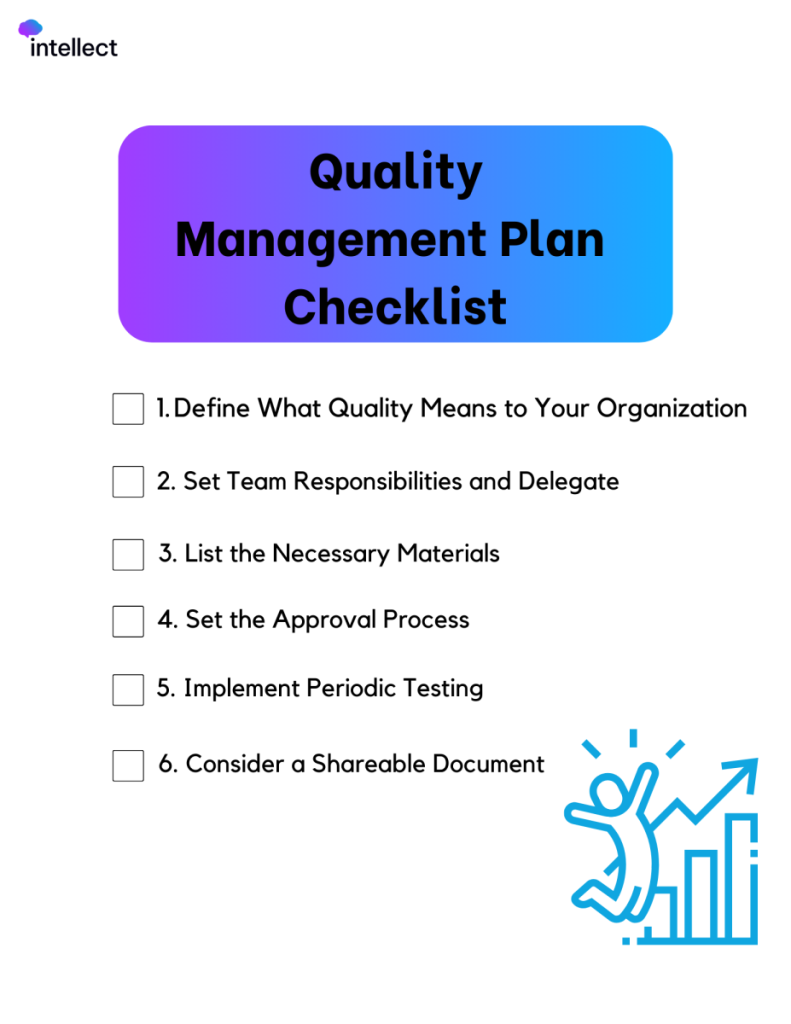How to Create an Efficient Quality Management Program
August 20, 2024

How to Create an Efficient Quality Management Program
Quality management is the backbone of any successful business. Ensuring that your products and services consistently meet or exceed customer expectations is crucial for long-term success. As W. Edwards Deming wisely said, “Quality is everyone’s responsibility.”
To achieve this, you need a rock-solid quality management plan. When launching a new project, your first step should be to develop a comprehensive strategy. A well-crafted quality management plan promotes clear communication, customer satisfaction, and stakeholder confidence.
In this blog post, you’ll discover what a quality management plan(QMP) is and how to develop one that truly works for your business.
What is a Quality Management Plan?
A Quality Management Plan (QMP) is a crucial document that guides the project manager and team in executing quality management and assurance actions. In project management, “quality” means meeting the project’s requirements and fulfilling the customer’s needs.
An effective project plan includes a QMP that outlines the activities you’ll carry out throughout the project’s life cycle to achieve its quality objectives.
Steps to Create a Quality Management Plan for Your Team:

- Define What Quality Means to Your Organization
Your QMP should clearly define the actions needed to achieve the desired results. Start by visualizing the ideal outcomes and setting goals that align with stakeholder interests and your team’s capabilities. Understanding what quality means to your organization will help you develop a plan to achieve it. For instance, if you’re developing software, quality might mean a fast, user-friendly interface. Your QMP would then include steps to optimize performance and design. Once you’ve nailed down this definition, make sure your team is on the same page.
- Set Team Responsibilities and Delegate
Quality is everyone’s responsibility. A key element of your QMP is assigning specific roles and ensuring accountability. Identify which team members are responsible for key tasks, considering their experience and skills. For example, if you have a seasoned software developer, they should handle code writing. Meanwhile, find a testing engineer who can provide objective feedback. Delegate tasks according to the project timeline to ensure everything runs smoothly and on schedule.
- List the Necessary Materials
Another vital component of your QMP is listing the materials needed to deliver quality outcomes. Research tools and technology that can boost efficiency, such as time management apps or document storage solutions. You may also want to include training programs to ensure your team is fully equipped before the project kicks off.
- Set the Approval Process
Work with your testing engineer and stakeholders to establish clear criteria for project completion. Base these criteria on your definition of quality and the features your customers expect. Sharing the approval process with your team from the start helps them understand how their work contributes to the overall product quality and allows them to manage their time effectively to meet deadlines.
- Implement Periodic Testing
Regular testing is essential to maintaining quality throughout the project. Your QMP should include protocols for periodic testing to ensure each phase meets quality standards before moving on to the next. For example, after designing a website’s navigation menu, test the accessibility of each page before adding more content. Tailor your testing procedures to the specific project, using a variety of tests to ensure quality from every angle.
- Consider a Shareable Document
Finally, compile all your QMP materials into one easily accessible document. Project management software can track progress and remind you of deadlines, while color-coded spreadsheets or instruction manuals can provide clear guidance. Use straightforward language and formatting to make sure everyone—employees and stakeholders alike—understands the QMP. Keep this document accessible throughout the project so your team can refer to it as needed.
What’s Next?
Now that you’ve mastered the art of creating an effective quality management plan, it’s time to put it into action. A well-executed QMP is not just a document—it’s a roadmap to excellence. By embedding these practices into your daily operations, you’ll not only meet your quality objectives but also elevate your entire organization’s performance.
Quality isn’t just a goal; it’s a commitment. Let’s take the next step together and turn your quality management plan into a powerful tool for driving success across every project.
